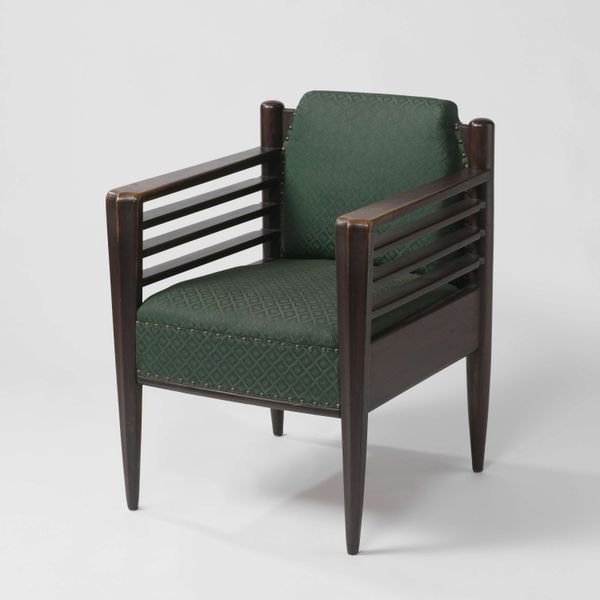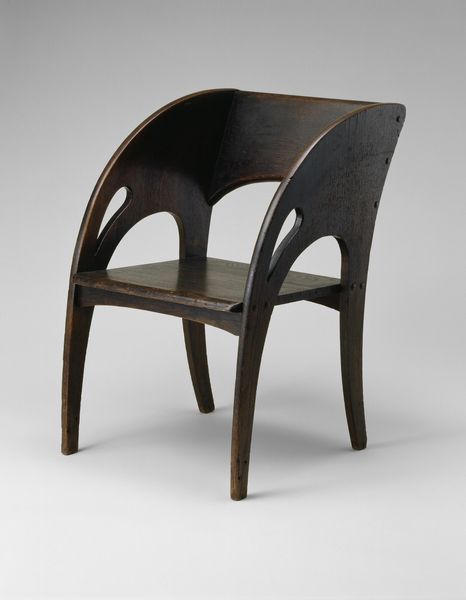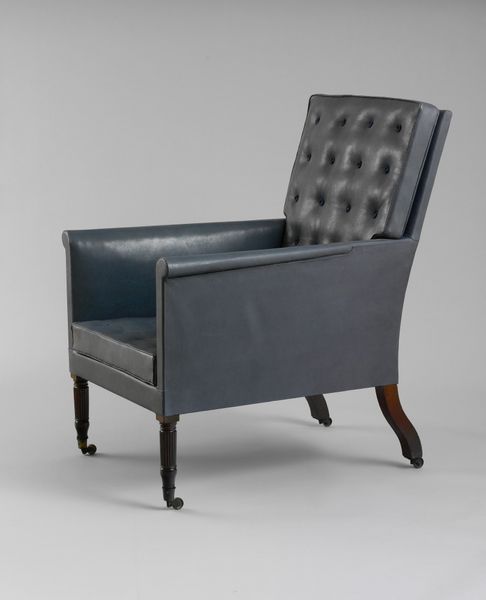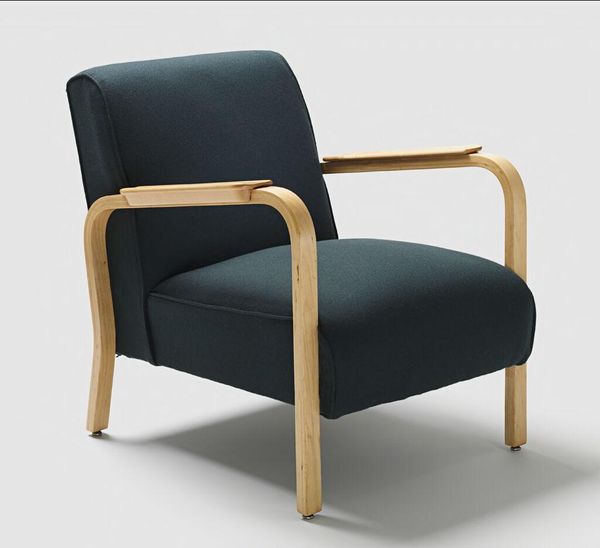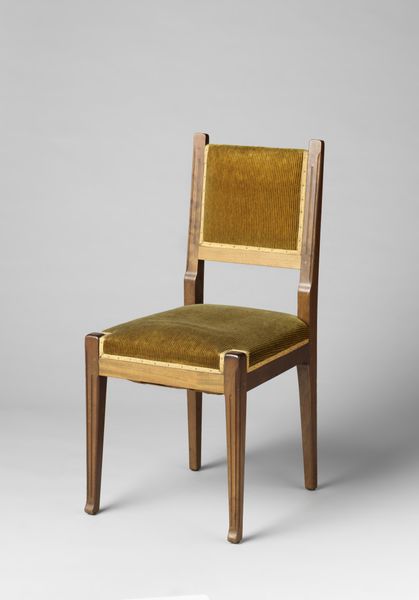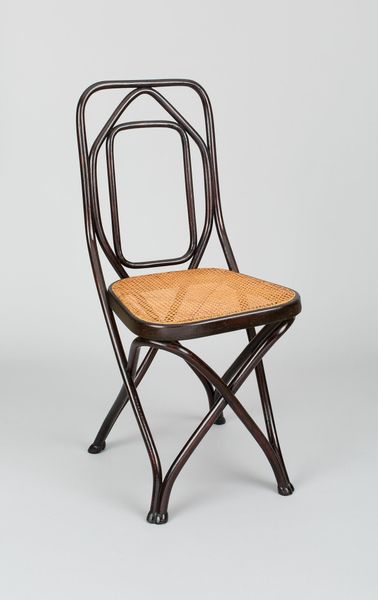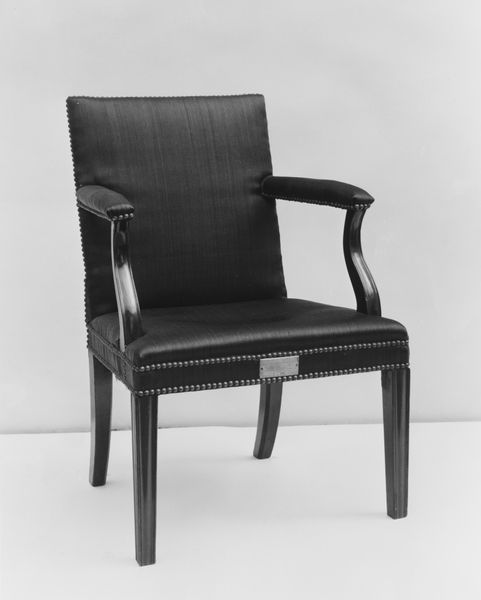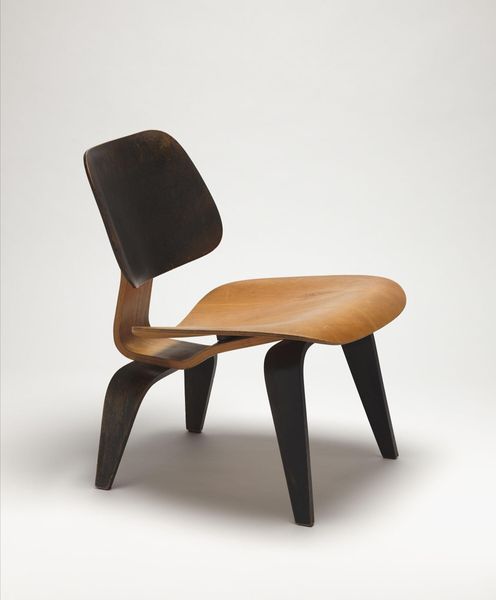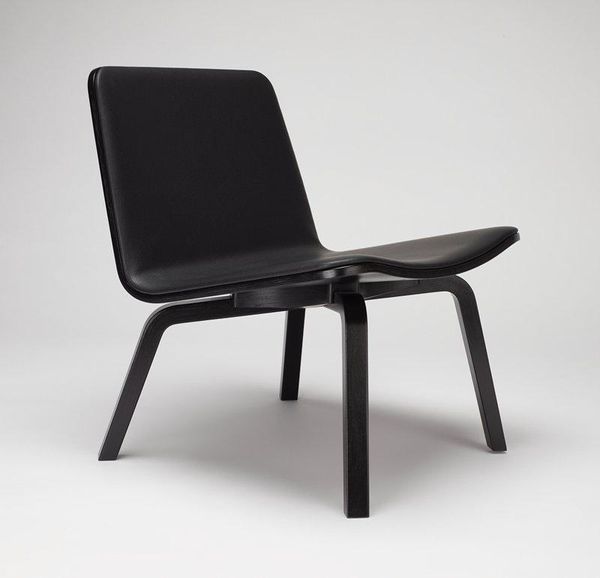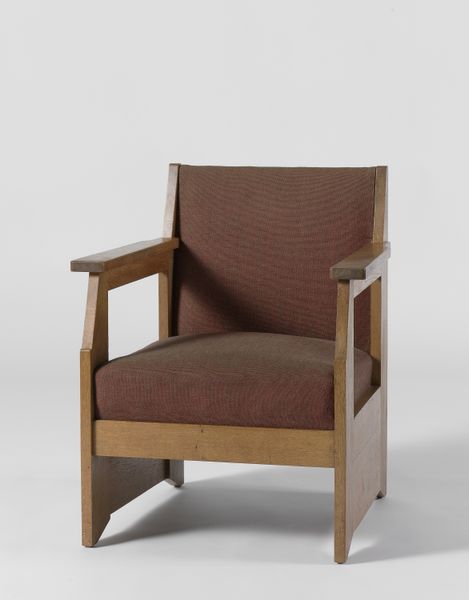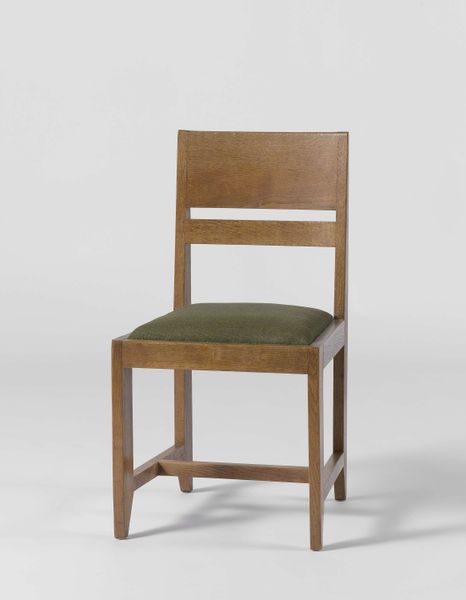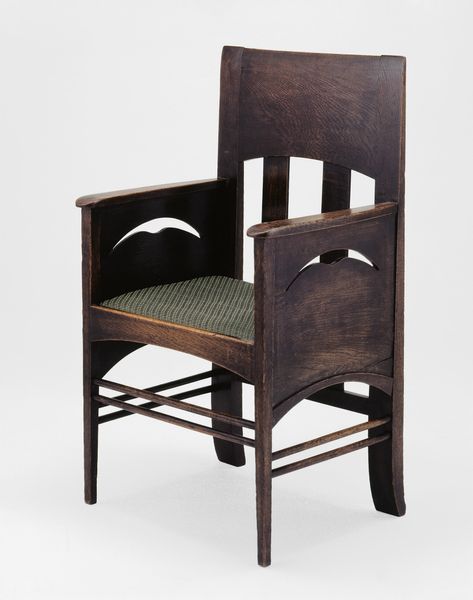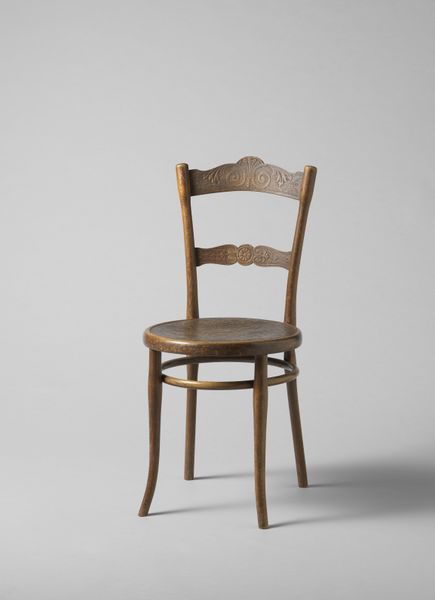
Armstoel met hoekige armleggers en bekleed met blauwe trijp 1933
0:00
0:00
textile, wood
#
art-deco
#
furniture
#
textile
#
geometric
#
wood
Dimensions: height 83 cm, width 58 cm, depth 58 cm, weight 10.2 kg
Copyright: Rijks Museum: Open Domain
Curator: This angular armchair, dating from 1933, is credited to Jacobus Fernandus Adolphus Semey. Notice how the wooden frame supports upholstery of this strikingly cool blue textile. Editor: There’s something very grounded and almost severe about this chair, even a little…depressing. The boxy frame and restrained colour speak of functionality over frivolity. Curator: Absolutely, and that restraint speaks volumes. Think of the socio-political atmosphere of the early 1930s. The geometric forms echo the Art Deco movement, which promoted a fusion of industrial efficiency with elegant design in response to social and economic pressures. The cool, steely blue can even be read as a psychological shield, warding off chaos in a tumultuous world. Editor: I see that, the emotional impact and symbolism really work in this. It reminds me of furniture made in the Bauhaus workshops, meant to serve working people who demanded good design for all. Semey seems to be pointing towards a more egalitarian space. This isn’t a chair for show; it is about bringing minimalist modern comfort to everyday lives. Curator: And consider the repeated right angles. The arms are at strict 90-degree angles, echoed in the legs and seat frame, which creates a very assertive presence. It isn't ornate, but the deliberate composition speaks of rational thought in unstable times. Editor: Though those sharp corners make it less comforting to my eye, but if the goal was for design for all, this design feels like compromise; but maybe that was part of the point? Semey might have intentionally reduced any superfluous forms in order to allow this piece of furniture to live in multiple kinds of settings or with people from different backgrounds. It seems built to last and withstand varied settings. Curator: That reading seems very perceptive; that’s a valuable insight, considering design for all in the era. It asks whether the artist can really produce something timeless. Editor: Definitely something to sit with—pun intended. There is something thought-provoking about everyday functional art that encourages questioning! Curator: Indeed, and exploring objects that exist to serve multiple roles is an enlightening way to examine design from that historical and critical perspective.
Comments
No comments
Be the first to comment and join the conversation on the ultimate creative platform.
